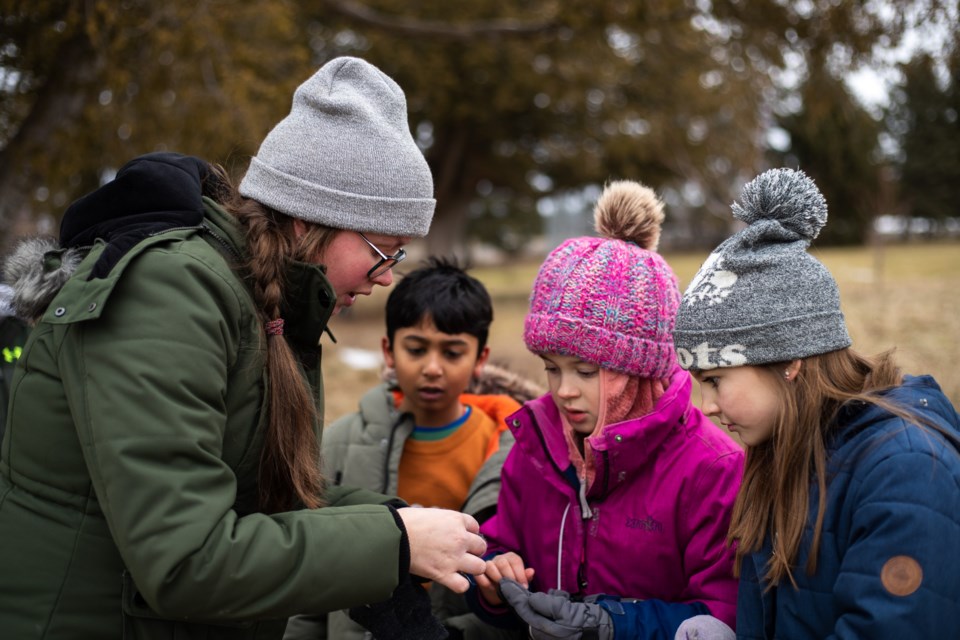The weather is changing and the break in the heat and humidity is lovely, but we all know where this is leading, and it can have us trying to hold onto sunny days and sandals.
Whether you had a lot of time off during the summer months, or you just appreciate the amount of time you spent outside enjoying the season, many of us cannot help wishing summer wouldn’t end.
In outdoor environmental education, we have a saying: “There is no such thing as bad weather, just bad clothing choices.” If you love fresh air, being active outside, and you know you will miss the calm connection you can feel with nature when you are outside more, why stop? Even though the days will get colder, there really isn’t a reason to stop spending time outdoors. Just keep adding layers to your clothing and you will be covered, literally and figuratively.
If you are not sure what you can do in fall or winter outside, keep reading.
If you live in an urban area that does not have naturalized walking trails, you can still go for neighbourhood walks, but we suggest creating a focus for these walks to make it interesting. Why should you cultivate your focus? Well, the older we get, and the more a road or path is travelled by us, the less we pay attention to our surroundings.
We have all driven to a place we go to often, such as our place of work, and wondered how we even got there because the time spent travelling is not even remembered. That’s because we no longer look around and notice our surroundings, as everything is familiar. This sets our focus and attention into nap mode as we go on autopilot. Time flies when you are on autopilot, and our senses become dull. If you try to be more intentional about what you are noticing around you, time will slow down, you will become more attentive, connected and grounded in the present moment.
If you do live near naturalized trails or forests, becoming engaged outside is a little easier. Natural changes in our surroundings happen all the time and there is always something new to notice. Each tree species has a different colour, pattern and shape on its bark, and the leaves and branching patterns are generally predictable. That being said, within the same species, trees have different shapes and sizes and can lean a little too much to the left at times.
Have you ever noticed a weirdly positioned branch on a tree and wondered what happened to it decades ago to make that happen? You could point it out to your walking partner, child, or friend and create stories as to why the branch is pointing down and then back up. There is so much to enrich our lives when out in nature; we just have to notice and consider their stories.
To aid you in your future journeys, there are fun digital apps that can also help us connect with nature as we walk along, cultivating our sense of wonder with our surroundings, which we can now easily find answers to. Have you ever noticed a new plant, fungus, or bug and wondered what it was? SEEK or iNaturalist are free apps that can help you discover the other life around you. Did you hear a bird sing and you are not sure what species it is? There is an app for that, too. Merlin can help you identify what you see, and even what you hear by recording the sounds and showing you a picture of the bird you are hearing.
That being said, knowing the exact name of a plant or animal may not be important to you, and that’s OK, too. Instead, refine your own descriptive talents and name the plant or animal so you can recognize it in future. The most important takeaway from naming species for you and your family is to be familiar with them so you feel connected to the space you are visiting.
Other ideas to catch your eyes are noticing patterns in the grass that show a ‘runway’ or trail taken by wildlife on their own journeys. Is it a beaten path used daily, or an infrequent bending of grass that hints at a path occasionally used? This is especially fun when the snow falls and you can daily see fresh tracks that tell us what lives there.
So, if you like to destress and breathe easier at least once a day or once a week, while creating meaningful memories for yourself and your family, pick a trail or natural space you would like to visit, something reasonably close so you can create a healthy habit for your family’s body, soul and mind. It is low cost and carries many benefits for today and the future.
Naomi Saunders is the manager of environmental education at the Nottawasaga Valley Conservation Authority.



